Charges: The Human Figure
Though found often as crests and supporters, the human figure simply used as a charge upon a shield is not often found. Instances of human figures that do occurr include Christ upon the cross and images of Saints. Representations of the Virgin Mary with Jesus are not as uncommon as other instances of human figures. Like birds and beasts, the position of the figure in a charge takes on different meanings and names.

a savage's head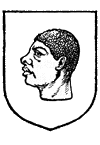
a blackamoor or Moor's head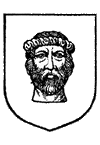
a Saracen's head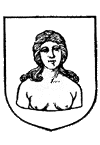
a woman's head and bust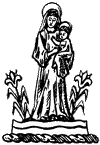
the Virgin Mary and Christ Child
The human arm, in whole or in part, is the portion of the human form most often represented in heraldry. When shown bare, the arm is blazoned as proper, while a clothed arm is termed either habited or vested. If the arm is clothed and the cuff is of a different color, it is blazoned as cuffed. The hand is usually either tan or peach — any other color is blazoned as gloved. When a hand or arm is shown in armor it is assumed to be plate, unless specified as chain or scale. If the armor is decorated with gold it is said to be garnished or.
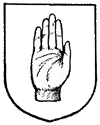
a dexter hand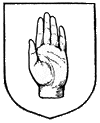
a sinister hand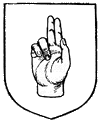
a dexter hand in benediction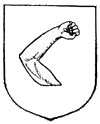
an arm embowed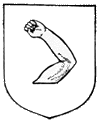
an arm embowed
to the dexter
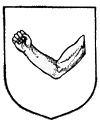
an arm embowed
fessways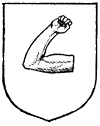
an arm embowed
the upper part in fess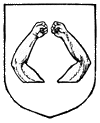
two arms counter‑embowed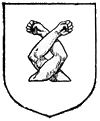
two arms counter‑embowed and interlaced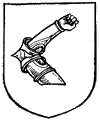
an arm embowed
in armor

an arm couped at the elbow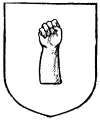
a cubit arm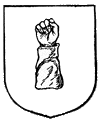
a cubit arm habited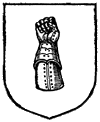
a cubit arm in armor,
the hand in a gauntlet
Other body parts which appear, although less frequently, include: legs (and boots), a woman's breast, an eye, a full skeleton or the skull alone.
General RBSC Hours
- Mon - Fri
- 9:30am - 4:30pm
- Sat - Sun
- CLOSED
For exceptions and Hesburgh Library information, view All Library Hours

 |
| 